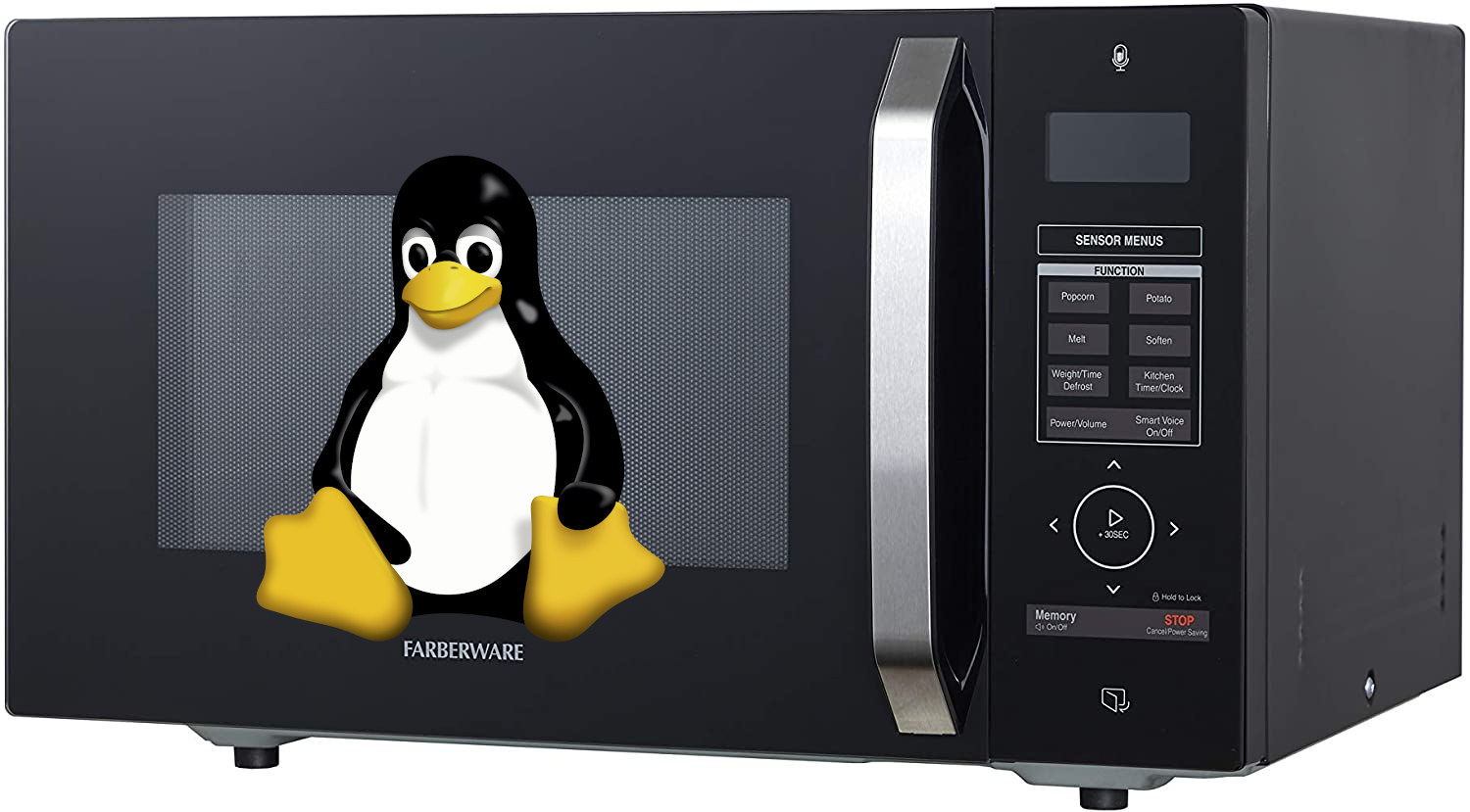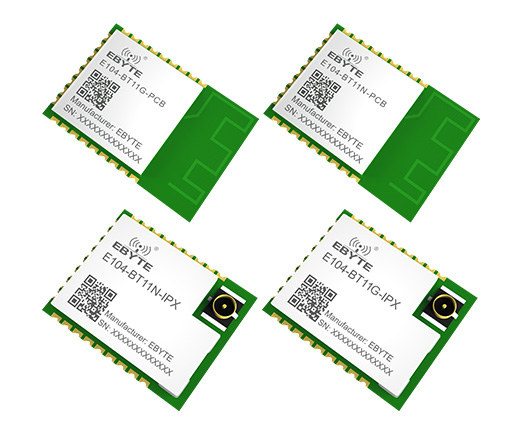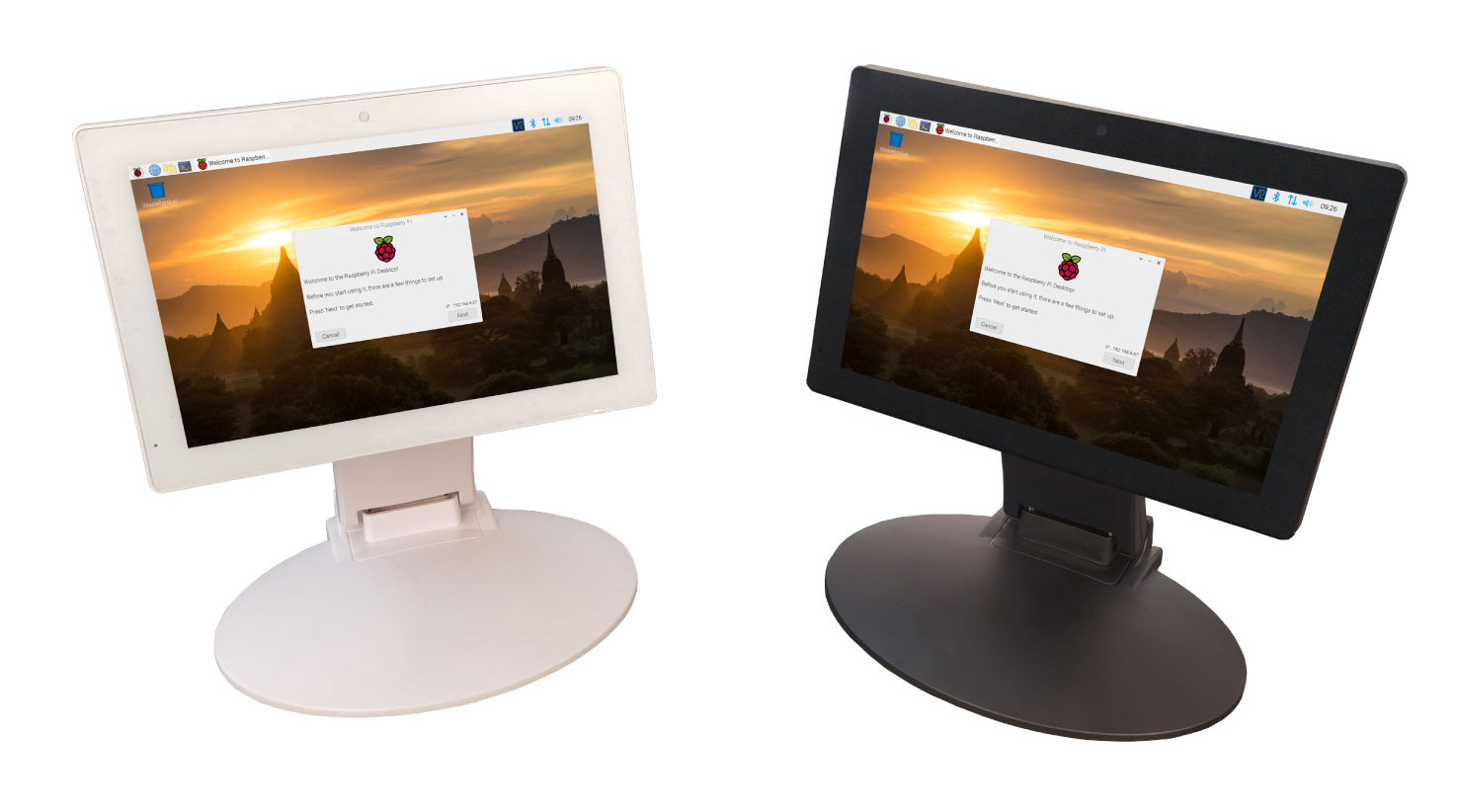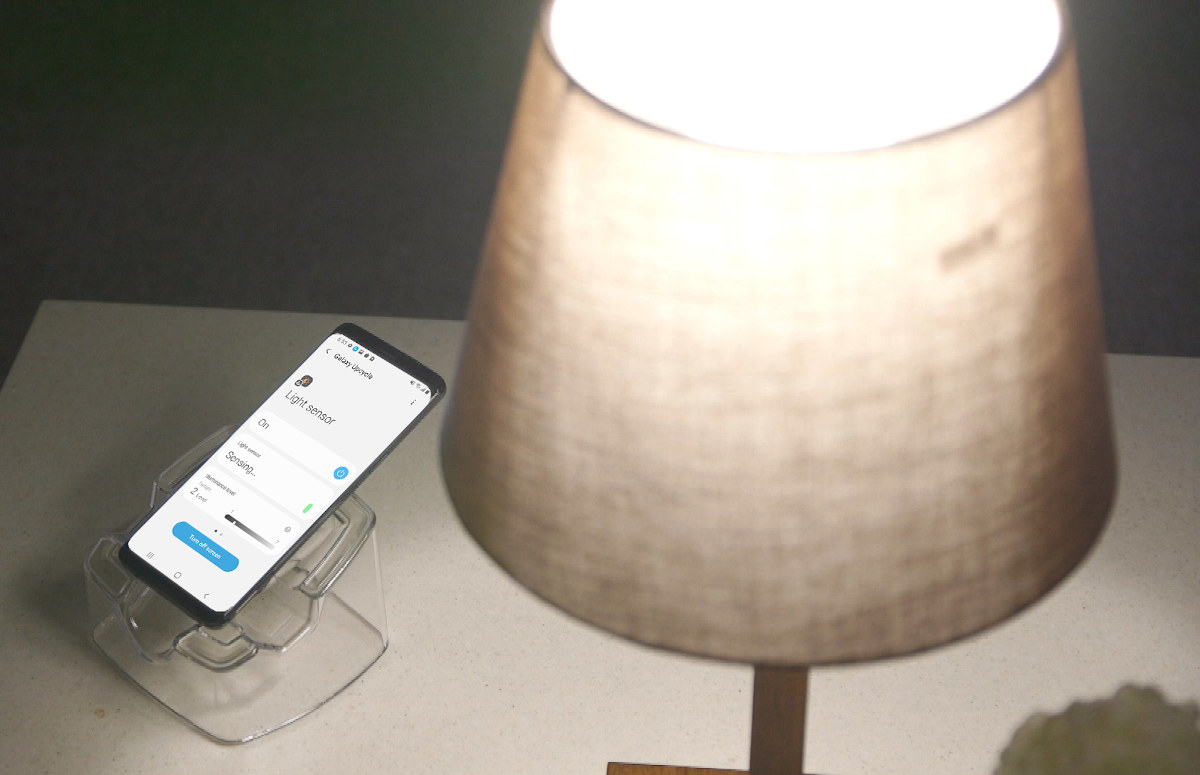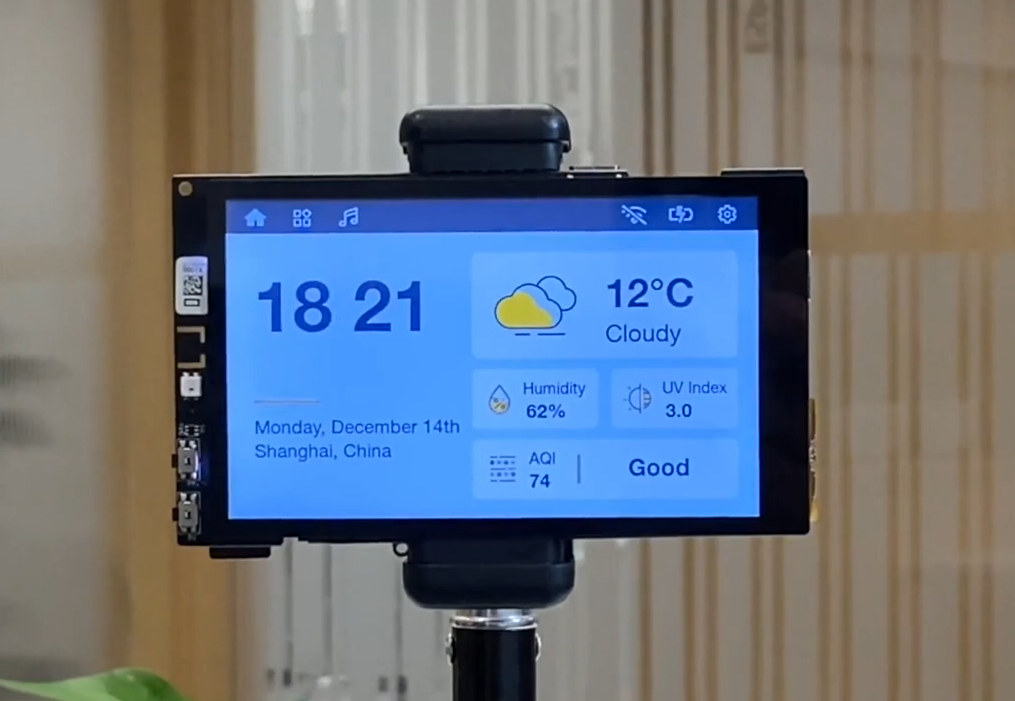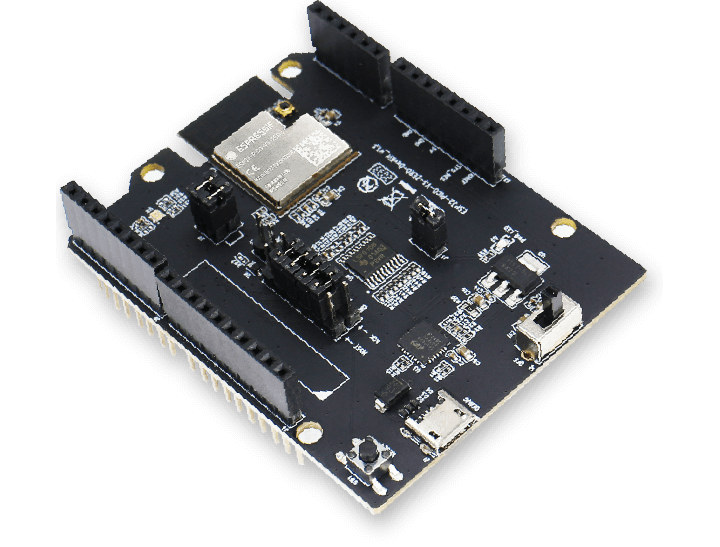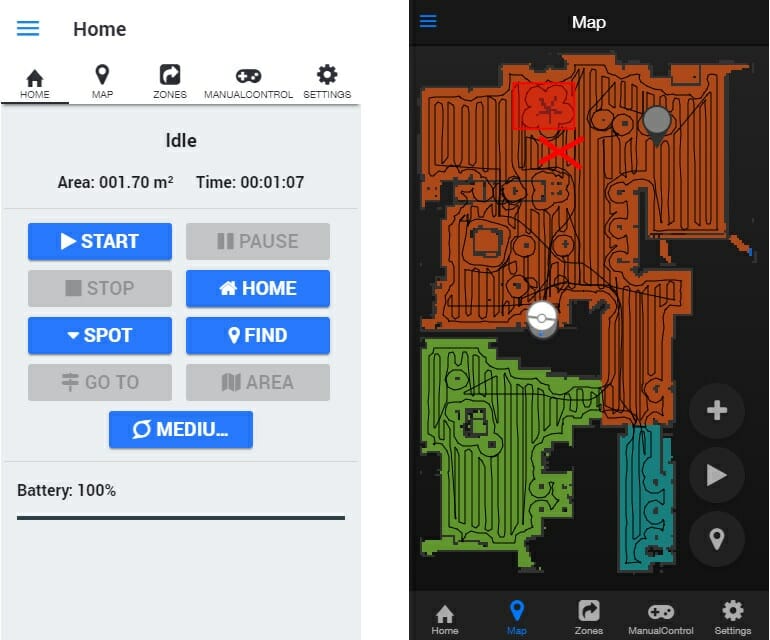Linux is everywhere, even on Mars, but if there’s one home appliance I did not expect to find the open-source operating system, it would have been the microwave oven. But Farberware thinks differently and launched the FM11VABK microwave oven running Linux on a Rockchip RK3308 quad-core Cortex-A35 processor to handle Sensory’s TrulyHandsfree voice stack enable voice-assistant features on the Linux microwave oven. I don’t think I need to go through the full specs of the 1,100 Watts microwave oven and I’ll focus on the voice assistant instead. People who worry about connecting everything to the Internet will be glad to know Farberware FM11VABK does not require an Internet connection or a mobile app for control. Everything is processed locally through TrulyHandsfree technology without sacrificing privacy, and with faster response times. Sensory offers its “Custom Domain-Specific Voice Assistant” service to any manufacturers of home appliances, vehicle infotainment systems, set-top boxes, home […]
Ebyte E104-BT11 Bluetooth Mesh module features Silicon Labs EFR32MG21 MCU
Ebyte E104-BT11 is a Bluetooth Mesh module offered in four variants with support for gateways (G) and node (N) versions, as well as PCB or IPEX antenna versions. Interestingly it is based on Silicon Labs EFR32MG21 Cortex-M33 microcontroller also found in ITEAD Zigbee 3.0 USB dongle, so it’s not impossible that it could be repurposed for Zigbee or Thread with firmware from Silabs. Ebyte E104-BT11 module specifications: Wireless MCU – Silicon Labs EFR32MG21 Arm Cortex-M33 microcontroller @ up to 80 MHz with DSP and FPU, up to 1024 kB flash, up to 96 kB RAM, 2.4 GHz IEEE 802.15.4 for Bluetooth LE, Zigbee, or Thread Wireless connectivity Bluetooth Mesh/BLE support with default firmware, up to 10,922 devices supported Max Tx power – 20 dBm Rx sensitivity- -88 to -97 dBm (-97 dBm typ.) Max data rate – 1Mbps Antenna – PCB antenna up to 200-meter range, or IPX antenna up […]
AIO-CM4-101 “All-in-One Pi” is a Raspberry Pi CM4 based 10.1-inch industrial PC
We’ve previously written about Chipsee CM4-70 Industrial Pi 7-inch Panel PC based on Raspberry Pi CM4 module that is offered either as an embedded model to be integrated into the customer enclosure or as a fully integrated panel ready to be mounted into a wall or machine. The company has now launched another model with AIO-CM4-101 “All-in-One Pi” industrial PC offering a 10-inch touchscreen display that can be mounted by using 75x75mm VESA holes, for example on a display stand. AIO-CM4-101 All-in-One Pi specifications: SoM – Raspberry Pi CM4 with Broadcom BCM2711 quad-core Cortex-A72 processor at 1.5 GHz, up to 8GB RAM, up to 32GB eMMC flash Storage – MicroSD card slot for storage expansion Display – 10.1-inch IPS LCD with 1280×800 resolution, 10-point capacitive touchscreen, 350 nit brightness: Camera – Optional front-facing camera Audio – Mic input on the front panel, 2W internal stereo speaker, 3.5mm audio In/Out connector, […]
Samsung Galaxy Upcycling at Home program aims to repurpose older phones into IoT devices
Electronics waste, also as known as e-waste, has been a problem talked about for years, and in 2015 we asked the question “What do you do with your old devices and boards?” as many devices just end up collecting dust or stored in a drawer. Some better ways include giving or selling them to others, or repurpose them. For instance, a cheap Arm HDMI dongle can make a torrent downloader, an old phone can be transformed into a surveillance camera, an ATX power supply could be converted into a bench power supply, etc… But repurposing devices require some technical skills which many of the smart CNX Software readers have, but it’s unrealistic to expect the typical consumer to be able to hack their old devices into new ones using some tutorials found on the Internet. Samsung Galaxy Upcycling Program aims to make recycling upcycling easier for owners of Galaxy smartphones, […]
ESP32-S2-HMI-DevKit-1 development kit ships with 4.3-inch touch display, 1,950mA battery
Espressif Systems ESP32-S2 single-core WiFi processor features an RGB LCD interface that makes it suitable for multimedia applications, and about two years ago, ESP32-S2-Kaluga-1 Multimedia Development Board was introduced with a touchscreen display & a camera. But now the company has launched another ESP32-S2 based development kit specifically designed for HMI (human-machine interfaces) found in smart home automation controllers, smart speakers with display, smart alarm clocks, and so on. Meet ESP32-S2-HMI-DevKit-1 equipped with a 4.3-inch color LCD display and a touch panel. ESP32-S2-HMI-DevKit-1 specifications: Wireless module – ESP32-S2-WROVER module with ESP32-S2 Xtensa single-core 32-bit LX7 microprocessor, up to 240 MHz with 128 KB ROM, 320 KB SRAM, WiFi 4 connectivity, 4MB flash, 2MB PSRAM Storage – Micro SD card slot Display – 4.3-inch display with 800×480 resolution, I2C capacitive touch panel Audio – Audio amplifier, built-in microphone, speaker connector USB – 1x USB-C OTG (DFU/CDC) port, 1x USB-C debug port […]
NXP i.MX 9 processors to integrate Arm Ethos U-65 microNPU, EdgeLock secure enclave
NXP i.MX 6 and i.MX 8 processors are widely used in industrial boards and systems-on-module, and the company has now teased a new family with i.MX 9 processors integrating Arm Ethos-U65 1 TOPS microNPU, as well as the company’s EdgeLock secure enclave for increased security. The company did not provide that many technical details, so we still don’t know which CPU cores, GPU, and exact peripherals will be found in the processor. But we do know the i.MX 9 processors will be manufactured with a 16/12nm FinFET class of process technology optimized for low power, and features the “Energy Flex” architecture that combines “heterogeneous domain processing (independent applications processor and real-time domains with a separate low-power multi-media domain), design techniques, and process technology to maximize performance efficiency”. That means most blocks of the processor can be turned off for low power audio or CAN networking use cases, and other industrial […]
ESP32-PICO-V3-ZERO-DevKit targets Amazon Alexa Connect Kit (ACK) development
Last summer, Espressif and Amazon jointly announced the ESP32-PICO-V3-ZERO Alexa Connect Kit module providing out-of-box connectivity to ACK (Alexa Connect Kit) cloud services, support for features such as Alexa control, “Frustration-Free Setup” and Amazon Dash replenishment for connected devices. At the time, the module was still at the developer preview stage, and you had to create your own carrier board for the module. But now development has been easier with the companies launching ESP32-PICO-V3-ZERO-DevKit compatible with Arduino Zero development board. ESP32-PICO-V3-ZERO-DevKit specifications: Wireless module – Espressif Systems ESP32-PICO-V3-ZERO with ESP32-PICO-V3 System-in-Package (SiP) based on ESP32-V3 dual-core Xtensa LX6 WiFI and Bluetooth SoC, a 4 MB SPI flash, a crystal oscillator, filter capacitors, and an RF matching network. Expansion – Arduino Zero compatible pass-through headers Debugging – 1x micro-USB port Misc – Power & Status LEDs, Reset button, jumpers to route specific signals to the headers, DSN (Device Serial Number – […]
Valetudo is a cloud-free web interface for robot vacuum cleaners
In my review of Kyvol Cybovac S31 LDS smart robot vacuum cleaner, I noted that app permissions meant both the map of your house and GPS coordinates may be sent to the cloud. But it was pointed out to me that earlier LDS robot vacuum cleaners from Roborock/Xiaomi were supported by Valetudo project that removes the need to connect to the cloud, and implements a mobile-friendly web interface as well as MQTT support for integration with Home Assistant or Node-RED. The project is not a custom firmware for the robots, and instead, the stock firmware is patched with Valetudo which developers describe as an “alternative App implementation + mock cloud which runs on the robot itself.” The good news is that you don’t necessarily need to teardown your vacuum cleaner to root it and install Valetudo, but it will depend on the model, and manufacturing date/firmware installed. The less good […]


